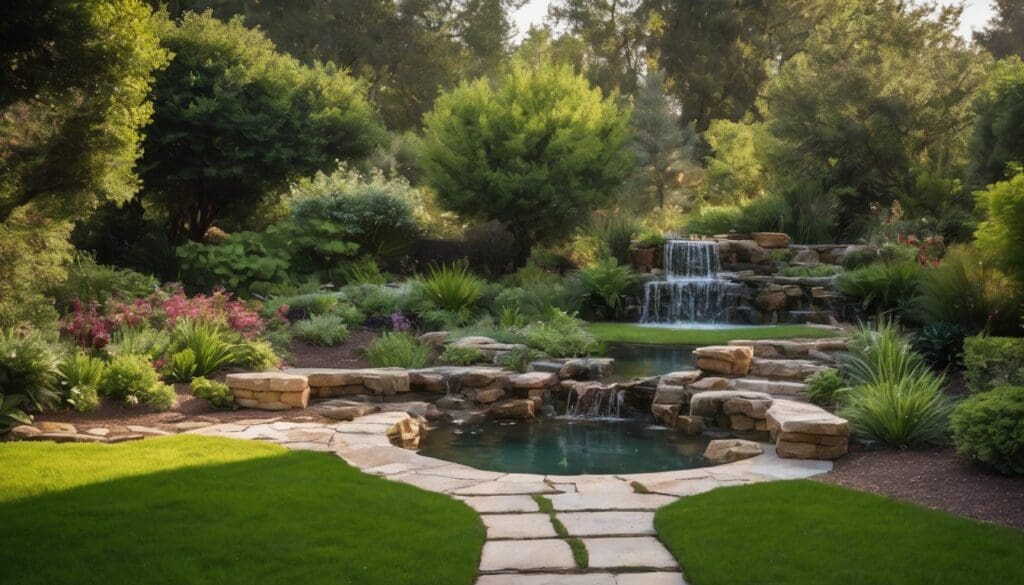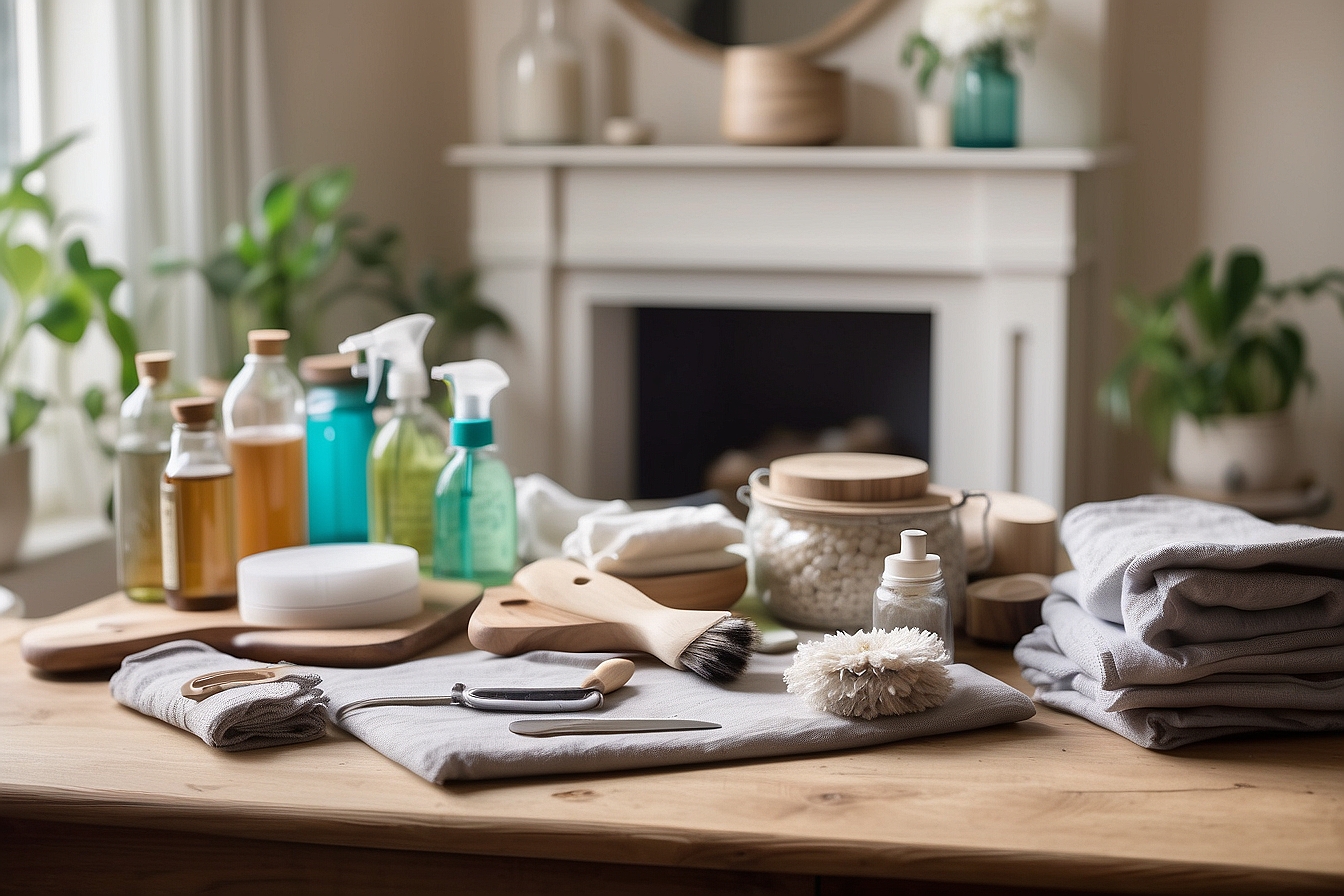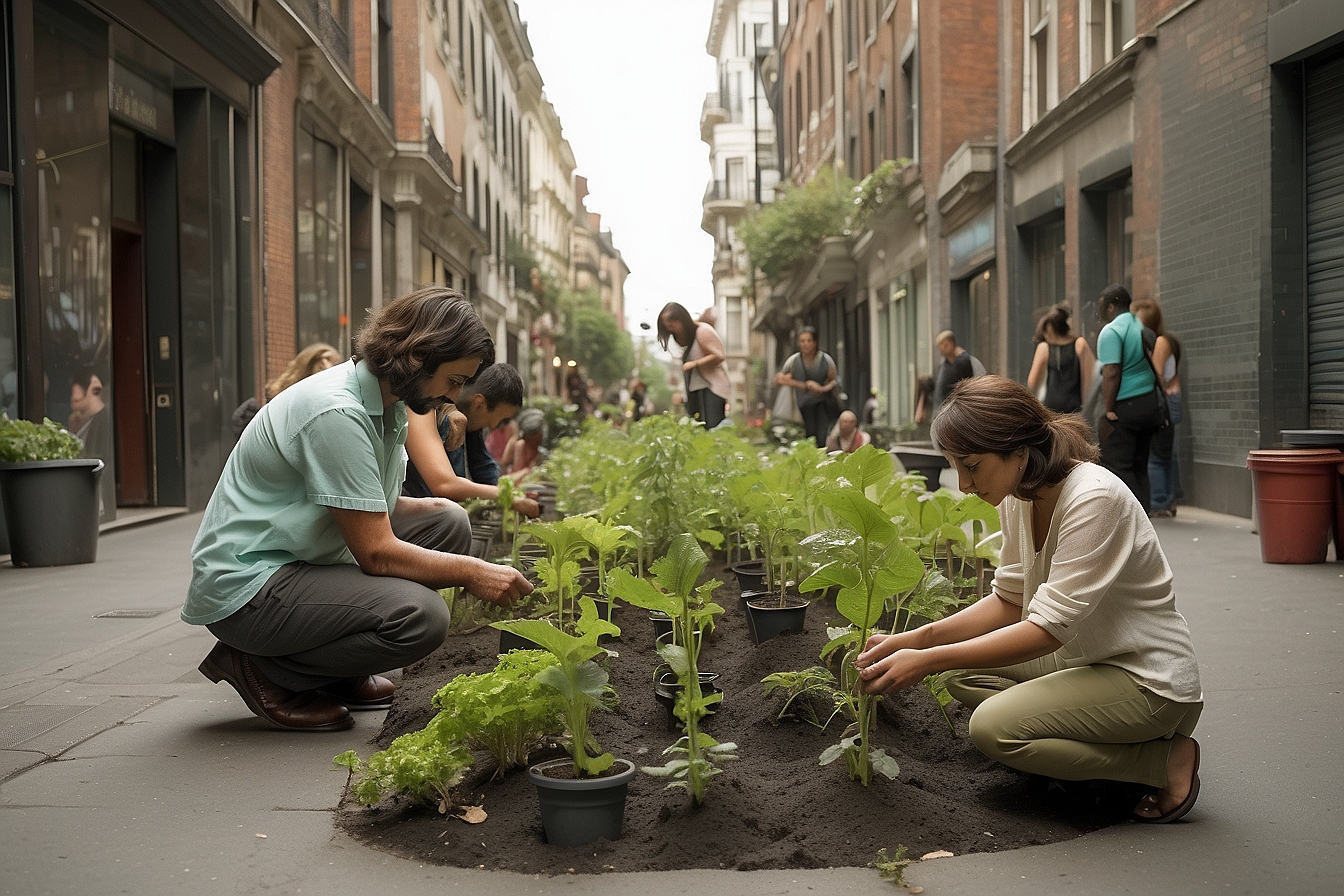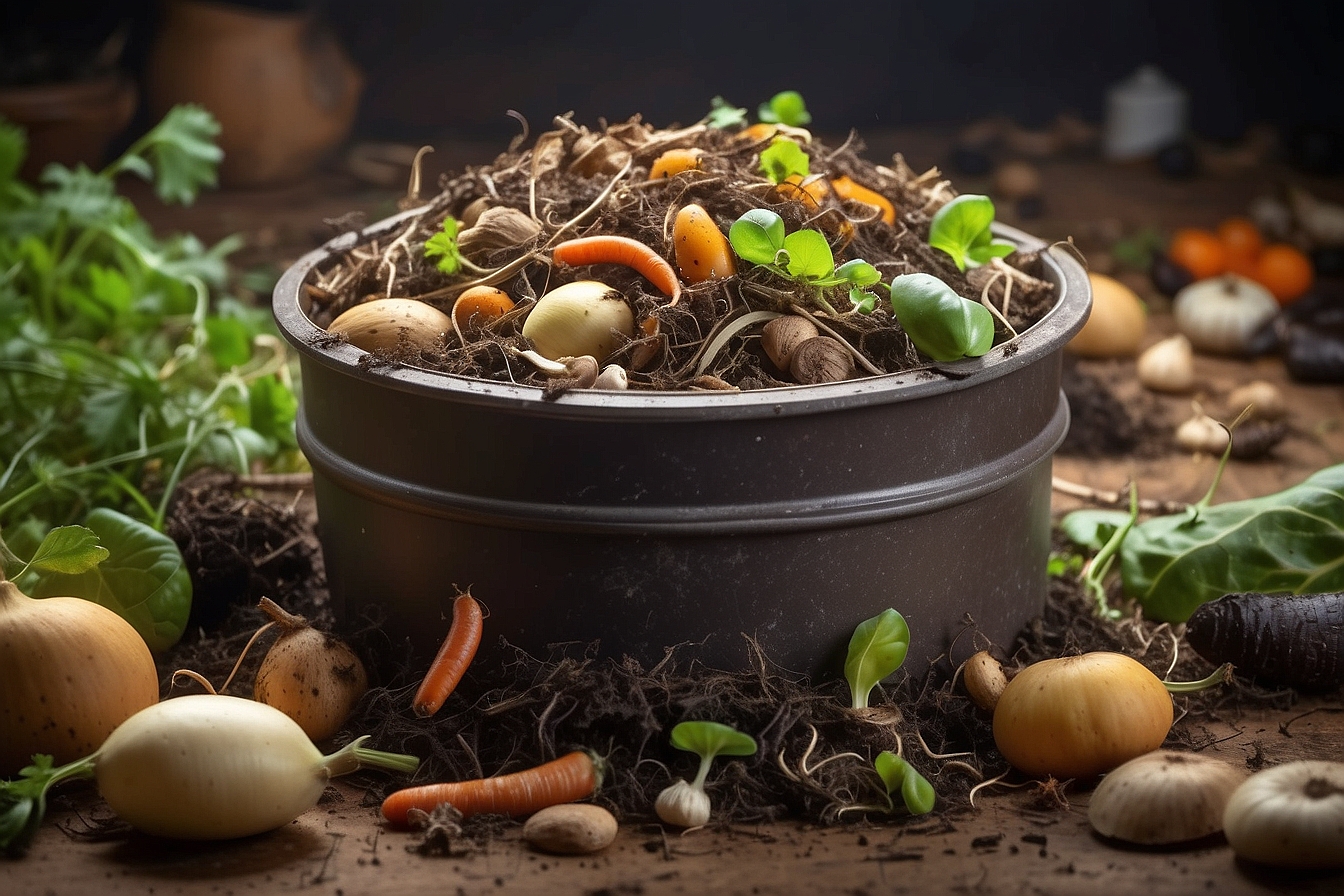Have you ever observed your garden seeming a tad thirstier than usual? It’s quite the common conundrum! Astoundingly, a single hose left unchecked can guzzle down up to 540 litres of water every hour.
In our endeavour to reduce this rather hefty consumption, we’ve uncovered a cornucopia of ingenious techniques guaranteed to keep your green sanctuary flourishing while conserving that ever-precious H2O.
So why not join us on this journey of discovery? Delve into our wellspring of advice – because in the realm of gardening, it’s clear: every drop truly does count. Let’s embark together on making each and every splash serve its purpose!
Key Takeaways
- Installing a rain barrel is an effective way to collect and reuse rainwater for watering gardens, reducing mains water usage and helping the environment.
- Using mulch in garden beds conserves moisture, prevents rapid evaporation, regulates soil temperature, and suppresses weeds.
- Practising drip irrigation delivers water directly to plant roots efficiently, cutting down on waste and evaporation.
- Adding organic matter into the soil improves its structure and ability to retain moisture which means less frequent watering is needed.
- Grouping plants with similar water needs together ensures efficient use of water resources without over or under-watering certain areas.
Why is Water Conservation Important in Home Gardening?
Water conservation is crucial in home gardening due to its environmental impact and the increasing threat of drought and water scarcity. By implementing water-saving techniques, gardeners can contribute to sustainable water use and help conserve this valuable resource for future generations.
Environmental impact
Our choices in home gardening ripple out to affect the environment on a larger scale. Overusing water not only strains our local ecosystems but also contributes to global challenges, like climate change.
By conserving water in our gardens, we actively reduce pollution since less run-off means fewer chemicals seeping into our rivers and oceans.
We’re part of a community that values every drop, and by adopting water-saving techniques for plants and smart irrigation practices, we promote sustainable living. Implementing drought-resistant gardening and efficient watering can drastically lower the volume of water needed for our green spaces.
This stewardship helps safeguard precious resources for future generations while maintaining harmony with nature’s delicate balance.
Drought and water scarcity
Drought and water scarcity directly impact our ability to maintain lush, thriving gardens. Reduced rainfall and water shortages challenge the sustainability of our gardening practices.
As environmentally conscious individuals, it’s crucial that we understand the importance of conserving water in home gardening to address these challenges. Without effective conservation efforts, excessive water usage can exacerbate drought conditions and diminish local water supplies.
To combat drought and water scarcity in home gardening, we must embrace sustainable watering techniques and adopt plant varieties that are resilient to arid conditions. By doing so, we can ensure the preservation of precious water resources for future generations while still enjoying vibrant garden landscapes.
Additionally, implementing eco-friendly strategies such as rainwater harvesting and xeriscaping can significantly reduce reliance on traditional irrigation methods.
Ways to Conserve Water in the Garden and Landscape
Install a rain barrel to collect and store rainwater for watering plants. Using mulch in the garden helps reduce evaporation and retains soil moisture, while practicing drip irrigation delivers water directly to plant roots where it’s needed most.
Install a rain barrel
To conserve water in the garden, we recommend installing a rain barrel. This simple and cost-effective method collects rainwater from your roof, which can then be used to water your plants.
By capturing this natural resource, you can reduce your reliance on mains water and lower your utility bills. Plus, using rainwater is beneficial for your garden as it’s free from the chemicals found in tap water.
By collecting rainwater in a barrel, you ensure a sustainable source of moisture for your plants during drier periods. It’s also an excellent way to reduce stormwater runoff and prevent erosion in the landscape surrounding your home – ultimately contributing towards environmental conservation efforts.
Use mulch to reduce evaporation
Mulch is an effective way to reduce evaporation in the garden, helping to retain soil moisture for longer periods. By covering the soil with mulch, such as wood chips or straw, we can prevent water from evaporating quickly under the sun’s heat.
This simple and sustainable method not only conserves water but also helps to regulate soil temperature and suppress weed growth, promoting a healthier garden environment overall.
Incorporating mulch into our gardening practices aligns with our goal of sustainable water use in gardening. It’s a practical and eco-friendly technique that supports our efforts towards efficient water management while nurturing a thriving landscape.
Practice drip irrigation
Drip irrigation is an efficient way to water plants by delivering small amounts of water directly to the roots. It reduces water usage and minimises evaporation, making it an effective technique for conserving water in home gardening.
This method also helps prevent weed growth and disease spread while promoting healthy plant growth.
By using drip irrigation, gardeners can ensure that their plants receive a consistent supply of moisture without wastage or runoff. This sustainable watering technique aligns with our commitment to eco-friendly practices in home gardening, helping us make a positive impact on the environment while preserving valuable resources.
Planting Strategies for Water Conservation
One effective strategy for conserving water in home gardening is to add more organic matter to the soil, which helps retain moisture and reduce the need for frequent watering. Another approach is to group plants with similar watering needs together, making it easier to manage irrigation and avoid overwatering.
Additionally, considering using native plants can also help conserve water as they are adapted to the local climate and require less maintenance.
Add more organic matter to the soil
By incorporating additional organic matter into the soil, it enhances its structure and water retention capacity. This can be achieved by using compost, leaf mould, or well-rotted manure.
These organic materials act like sponges, absorbing water and releasing it slowly to plant roots. Consequently, the need for frequent watering is reduced while providing a steady supply of moisture to your plants.
Additionally, organic matter fosters a healthy soil ecosystem with beneficial microorganisms that help break down nutrients in a form readily available to plants. Consequently, this enables better nutrient absorption for improved plant growth and resilience during dry periods.
Group plants with similar watering needs
Grouping plants with similar watering needs is a smart strategy for efficient water use in gardening. This approach allows you to tailor your watering schedule, ensuring that each group receives the appropriate amount of moisture without overwatering or underwatering any particular plant type.
By doing so, you can conserve water and create a more sustainable garden environment. Moreover, it simplifies maintenance as it streamlines your watering efforts and prevents wasting water on plants that don’t actually need it.
Consider planting drought-resistant species together to make the most of limited resources while still creating visually appealing landscapes. Grouping thirsty plants in one area and those with low water requirements in another will help manage hydration efficiently throughout your garden or landscape design, promoting eco-friendly water management in gardening.
Consider using native plants
Native plants are well-adapted to the local climate and soil conditions, making them naturally more resilient to drought and requiring less water once established. Their deep root systems help improve soil structure, increase infiltration, and reduce surface runoff.
By choosing native plants for your garden, you can create a low-maintenance landscape that conserves water and supports the local ecosystem.
Additionally, native plants also attract pollinators and beneficial wildlife, contributing to a healthier and more balanced environment. When selecting plant species for your garden or landscape, consider incorporating a variety of drought-resistant native plants that thrive in your specific region.
This approach will not only save water but also enhance the overall sustainability of your gardening practices.
Other Water-Saving Tips for Gardening
Adjust your watering schedule based on the type of soil in your garden to avoid wasting water, and opt for cooler times of day for watering to prevent evaporation — read more about efficient water-saving techniques in home gardening.
Adjust watering schedule based on soil type
To conserve water, we adjust the watering schedule based on soil type. This means that sandy soils need more frequent watering, while clay soils require less frequent but deeper watering.
By understanding our soil type and adjusting the watering schedule accordingly, we can prevent water wastage and ensure that our plants receive just the right amount of moisture to thrive.
We determine soil type by conducting a simple test: grab a handful of damp soil and squeeze it. Sandy soil will fall apart easily, while clay soil will retain its shape. By knowing our soil type and adapting our irrigation schedule, we contribute to sustainable gardening practices and efficient water use in our landscape.
Opt for cooler times of day for watering
Watering your garden during the cooler parts of the day, such as early morning or late evening, helps to reduce water loss due to evaporation. This ensures that more water penetrates into the soil and reaches the plant roots, providing maximum hydration for your plants.
By choosing cooler times of the day for watering, you can make sure that your plants receive the moisture they need while minimising wastage. This simple adjustment in timing can contribute significantly to conserving water in your home gardening practices without compromising on the health and vitality of your garden.
Keep beds weeded to reduce competition for water
Weed the beds regularly to reduce competition for water among your plants. This simple task helps keep the garden soil moist and prevents weeds from stealing essential moisture from your plants.
By removing competing vegetation, you enable your plants to access more of the available water.
Regular weeding also reduces the need for excessive watering and maintenance. Additionally, it promotes healthy plant growth by minimising stress on your garden’s flora. Consequently, this practice contributes to water conservation in home gardening while fostering a vibrant and thriving landscape.
Conclusion
In conclusion, conserving water in home gardening is crucial for preserving our environment. By implementing smart irrigation techniques and planting drought-resistant species, we can significantly reduce water usage.
With the right strategies and a little effort, we can create beautiful and sustainable gardens while contributing to the conservation of this precious resource.
FAQs
1. What does conserving water in home gardening mean?
Conserving water in home gardening involves using watersaving techniques to manage your garden’s water use efficiently, minimising waste and preserving this vital resource.
2. How can I conserve water when irrigating my garden?
You can conserve water with smart irrigation systems, such as drip irrigation, or by watering at cooler times of the day to reduce evaporation and by employing soil moisture retention methods.
3. Are there plants that help save water in my garden?
Yes, planting drought-resistant plants adapts your landscape to be more Waterwise and reduces the need for frequent watering.
4. Can mulching help with conserving water in my garden?
Absolutely! Mulching is a key watersaving tip as it helps to keep soil moisture levels stable and reduces the environmental impact of water usage on your gardening practices.
5. What are some other ecofriendly water management tips for gardens?
Other Watersaving techniques include collecting rainwater for use in the garden and choosing efficient watering techniques that deliver water directly to plant roots while avoiding over-watering.





